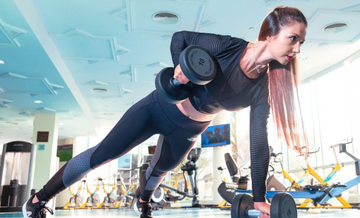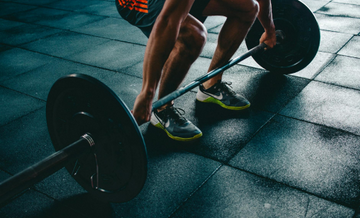
Weight lifting exercise for instance is a good exercise since it assists in the development of muscles. But it is important to realize the fact that there could be potential hazards of some of these exercises especially where they involve lifting weights over the head. Another issue that has been raised is whether this kind of activity causes a disease called Eustachian Tube Dysfunction which is a disease in the ears that could lead to pains or a hearing challenge.
What is Eustachian Tube Dysfunction (ETD)?
Eustachian Tube Dysfunction or ETD refers to a situation where the Eustachian tube-a tiny pipe that connects the middle ear to the back of the throat- becomes dysfunctional or gets blocked. It plays the vital role of equalizing the pressure of the air to the two different sides of the eardrum thus ensuring proper hearing or sound processing and health of the ears. When this structure is not doing its job then it; leads to hearing loss and a sense that the ears are stuffed up, pains, and occasionally there is the accumulation of a fluid called serous effusion in the mid part of the ear.
The Link Between Lifting Heavy Weights and ETD
One of the many questions raised by weightlifters is can lifting heavy weights above the shoulders cause ETD (Eustachian Tube Dysfunction). In overhead lifts, there is an added pressure on the body especially on the upper body and head thus the concern. If you are moving weights that are heavy over the head such as when you are doing shoulder presses/overhead presses the pressure in the ears increases leading to eustachian tube.
How Lifting Heavy Weights Above the Shoulders Can Cause ETD
Lifting heavy weight above the head squashes different muscles around the neck head and shoulders. It can also cause dysfunction of muscles and tissues that may affect the Eustachian tube. These exercises can also put more pressure inside the Eustachian tube to a level at which it can no longer handle or open and close as efficiently as before, causing ear pain, pressure, and muffled hearing.
Preventive Measures for Avoiding ETD While Weightlifting

While the risk of developing ETD from weightlifting is relatively low, it’s important to take preventive measures to minimize this risk, especially if you frequently engage in overhead lifts. Here are some tips to help prevent ETD:
Although the odds of developing ETD from weightlifting are low, you should be proactive and reduce your chances of getting this disease, particularly if you do overhead lifts exercises. Here are some tips to help prevent Eustachian Tube Dysfunction:
1. Listen to Your Body
Ensure you observe any signals of distaste or force being applied on the ears when lifting or after lifting for some time. If you ever happen to develop symptoms of ETD, it may be advisable that you lose some Poundage or alter and…..
2. Proper Technique:
It is also important to note the right procedure that needs to be followed in order not to cause any harm to the body or develop some sort of discomfort. Make sure that you employ the right form when lifting weights especially when conducting the overhead movements. This includes ensuring that when swallowing you should keep your neck and head straight so that there will be no pressure exerted on the Eustachian tube.
3. Gradually Increase Weight
Do not go straight in for the big weights from the get-go. Differentiate the kind and intensity of exercises to give your body time to adjust to the workouts and avoid overstraining the muscles around the cartilage of your Eustachian tube.
4. Take Breaks
Taking a break between the sets or exercises for some time will keep pressure from building up thus preventing ETD. Do not over-train and always make sure to take some time and rest.
5. Ear Health
Help your ears to stay healthy by washing them gently and refraining from any activities that might worsen existing ear issues. This comprises keeping away from loud noise or sounds and the overall health of the ear.
Also Read: How to Put on Wrist Wraps
Symptoms of Eustachian Tube Dysfunction

Knowledge of the symptoms of ETD will assist an individual have early signs of the condition to seek medical attention. Common symptoms include:
Muffled Hearing: It may be as if you are hearing things through a layer of cotton wool – rather indistinct and indistinctly heard.
Ear Pain or Discomfort: Earache, especially behind the eardrum, that might be worse when you exercise or after you do.
Fluid in the Middle Ear: At times, there is entrapment of the fluid from the middle ear which makes it even more pressed and painful.
Popping or Clicking Sounds: Sometimes you can experience a voice change and this is accompanied by clicking or popping in the ears whenever you swallow or yawn.
Balance Issues: However, in more serious conditions, ETD is capable of causing balance disturbances thus making you feel that the world is spinning around you.
Exercises That Can Potentially Lead to ETD
Any form of physical activity especially those that entail the use of weights that are lifted above the head is likely to cause ETA. These exercises include:
- Shoulder Presses: Both dumbbell and barbell-based shoulder presses entail lifting weights to the top, which causes pressure inside the ear.
- Overhead Presses: As with shoulder presses, overhead presses work the shoulders and upper body and create pressure that impacts the Eustachian tube.
- Snatches and Clean and Jerks: These Olympic weightlifting movements entail explosive overhead lifting that seems to impose a lot of force on the Eustachian tube.
Proper Technique and Preventive Measures
To minimize the risk of ETD during the types of exercises, it is much wiser to pay attention to the proper technique and the amount of weight being lifted. Another thing that should be avoided is overstraining yourself to the extent that you fail to hear the crackling sound or feel your ears popping as this may lead to Eustachian Tube Dysfunction. If you are suffering from the signs of ETD it is recommended that you change your exercise regimen or seek medical advice on how you can continue exercising without risking your health.
Can I Exercise with ETD?
If you are already suffering from Eustachian Tube Dysfunction, you may be wondering whether it is okay to continue exercising. It is suggested that light to moderate physical activities are viable, but activities that may raise internal pressure like lifting heavy weights or exerting force on ears and face should be avoided. If you are in doubt, then seek medical advice from an expert who will help you know the exercises best suited for you.
Where to Get the Best Weightlifting Gear
Can lifting heavy weights above the shoulders cause etd is a common and effective exercise for building muscle and strength? However, it's important to be aware of the potential risks, including the possibility of developing Eustachian Tube Dysfunction (ETD). By understanding the link between lifting heavy weights and ETD, and by following preventive measures such as using proper technique, gradually increasing weight, and listening to your body, you can reduce the risk of ETD and continue to train safely.
At Raw Strength, we offer a wide range of high-quality weightlifting gear that supports your fitness journey while helping you stay safe. Whether you need weightlifting belts, wrist wraps, or proper footwear, our products are designed to improve your performance and protect your body from unnecessary strain. Visit our website today to explore our collection and take your training to the next level!
FAQs
1. What Muscles Cause Eustachian Tube Dysfunction?
While no specific muscles directly cause Eustachian Tube Dysfunction, straining the muscles around the neck, shoulders, and upper back during exercises like overhead lifts can contribute to ETD by increasing pressure around the Eustachian tube.
2. Can I Exercise with ETD?
Yes, but it's important to modify your routine to avoid activities that increase pressure in the ears. Light to moderate exercise is generally safe but consult with a healthcare provider if you have concerns.
3. What are some common symptoms of ETD related to weightlifting?
Experiencing ear fullness, discomfort, pain, hearing issues, or dizziness after weightlifting? These are common signs of Eustachian Tube Dysfunction (ETD), which can sometimes develop after intense workouts. If you've noticed these symptoms, it might be worth taking a closer look at your lifting technique.
4. Are certain exercises more likely to cause ETD than others?
Certain exercises, like overhead presses or snatch lifts, can put extra strain on your upper body and neck. This strain may impact the function of your Eustachian tubes, potentially triggering ETD.
5. How can I prevent ETD while weightlifting?
To reduce the chances of ETD while lifting, prioritize good form and avoid using weights that are too heavy, which might compromise your technique. You should also practice controlled breathing during lifts to help minimize the risk.
6. What should I do if my symptoms worsen despite making adjustments?
If your symptoms persist or get worse, it’s best to consult with a healthcare professional. They can provide personalized advice and suggest treatment options that address your needs.




